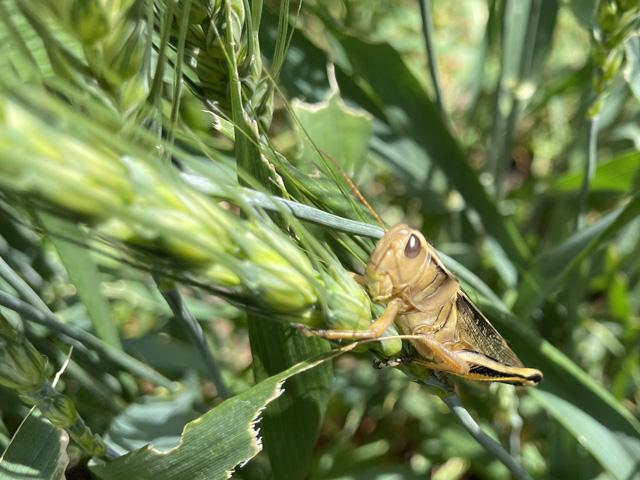Spring Wheat Tour: Day 2
Day 2 Wheat Tour Yields Decline but Still Promising
DEVILS LAKE, N.D. (DTN) -- Yields dropped slightly on the second day of the Wheat Quality Council's annual Hard Spring Wheat and Durum Tour on Wednesday, July 27. Scouts recorded an average weighted estimated yield of 47.7 bushels per acre (bpa) for spring wheat and 39.9 bpa for durum.
Day 1 yield estimates for spring wheat and durum came in at 48.9 bpa and 41.4 bpa, respectively. Read DTN's Day 1 tour story at https://www.dtnpf.com/…, which includes a link to a video.
About 50 tour participants stopped at 104 spring wheat fields and 29 durum fields in central, northwest and north-central North Dakota before ending Day 2 in Devils Lake. Three days of yield and crop health assessments wrap up on Thursday, July 28, in Fargo, where the tour began.
Tour yield projections continue to remain promising, despite the second-day decline. The two-day weighted average is 48.3 bpa for spring wheat and 40.2 bpa for durum. In comparison, the initial USDA national spring wheat and durum yield estimates are 47 and 40.3 bpa, respectively.
Some farmers and wheat specialists say there's a chance North Dakota's spring wheat yield this year could break the previous record of 51 bpa. But the crop isn't made yet.
Wheat specialists recommend farmers remain vigilant to spray for grasshoppers, which are an issue in some areas, and other pests. They also need to apply fungicides if needed to keep foliar diseases, such as scab, from reducing yields.
"It's probably not a bumper crop, but (wheat) looks good overall," said Clair Keene, North Dakota State University small grains and corn agronomist. "There are pockets of grasshopper pressure. Some farmers are making two to three insecticide applications."
P[L1] D[0x0] M[300x250] OOP[F] ADUNIT[] T[]
Keene said grasshoppers can reduce yields by eating leaves needed for photosynthesis during grain fill and clip stems, causing the head to fall off.
"We're not seeing widespread damage, but it could add some costs with spraying," she said.
Francis Leiphon, who farms northeast of Devils Lake, said grasshopper pressure isn't a concern in his fields. However, he sprayed all his 800 acres of spring wheat with a fungicide to keep foliar diseases at bay.
Leiphon said his spring wheat looks surprisingly good given it was planted two weeks later than normal due to wet conditions. His crop was seeded between May 20 to June 15.
With harvest several weeks away, Leiphon said all he can do is wait, scout fields and hope the weather continues to cooperate -- minimal hot days and occasional rain.
"The crop has potential (to yield well), but I'm always suspicious if it will hold up," Leiphon said. "I'm hoping yields will come in around 50 bushels per acre. But wheat is only a grass until grain is in the heads.
"I've done everything I can do at this point," he added.
Tour scouts, which include representatives from the wheat industry, milling and baking, USDA officials, farmers and more, reported minimal insect and disease pressure on Day 2. Like Day 1, some bacterial leaf blight, Fusarium head blight, grasshoppers and wheat stem maggot damage was found, but nothing was considered significant.
Spring wheat and durum yield prospects are much better this year than 2021, when production was curtailed by drought. Last year, the two-day tour average weighted yield for spring wheat and durum was 27.1 bpa and 24.3 bpa, respectively.
Spring wheat in North Dakota averaged 33.5 bpa in 2021, according to USDA data.
Scouts will explore fields in northeast North Dakota and in bordering Minnesota counties in the morning on Thursday, July 28. The tour's final yield estimate and production projection will be released in the early afternoon during the wrap-up crop discussion at North Dakota State University.
-- Dave Green, Wheat Quality Council executive vice president, talks about Day 2 of the council's annual Hard Spring Wheat and Durum Tour: https://www.dtnpf.com/…
Matthew Wilde can be reached at matt.wilde@dtn.com
Follow him on Twitter @progressivwilde
(c) Copyright 2022 DTN, LLC. All rights reserved.





